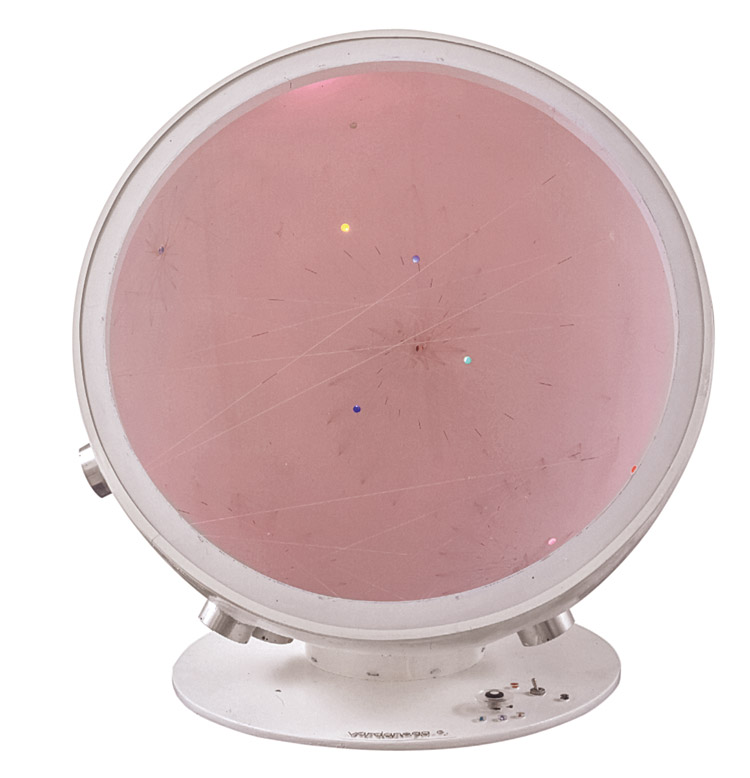From the beginning of his career, his concerns regarding space, color and light have been observed in line with the observation of cosmic phenomena. The creation of works from plaster half spheres in its production dates back to 1947 and, although the first examples did not have light or movement, they do show the early incorporation of space into its thematic universe. After beginning in abstraction concrete and having been part of the Concrete Art-Invention Association, Gregorio Vardánega undertook his first trip to Europe in 1948. Among the workshops and artists he attended at that time, in his meeting with Georges Vantongerloo, in addition to being a great influence, it seems having found a confluence with their own lines of research/creation. Interested in universal space and the observation of cosmic phenomena, the Belgian artist had abandoned neoplasticist postulates towards the end of the 1930s to give way to plastic research into the universe. The scientific novelties in relation to time and space, the theory of relativity and non-Euclidean geometry were presented as plausible elements to be studied from the plastic arts. After his return to Argentina, and before leaving again for Europe, in 1959, and settled with his wife, Martha Boto, in Paris, the artist was a founding member of the Asociación Arte Nuevo in 1955, and of the group Artistas Non Figurativos Argentinos (ANFA) in 1956. The Asociación Arte Nuevo published a newsletter of the same name of six issues between 1956 and 1958. In the first of them the article “Problems of space and structure, its relationship with the social” appeared, signed by Vardánega and illustrated with drawings-schemes also of his authorship, which showed some of the proposals that the artist made with semispheres. Likewise, in his statements about kinetic art, the artist referred on different occasions to the liberating instance that his works represented based on the elements that he postulated as part of a new formal education: “the aesthetics of movement and electronics, the aesthetics of light and electric color.”This conviction about the advanced scientific and technological devices that could be used in his works in pursuit of the creation of pleasant environments through artistic objects inevitably directed his production towards kinetic art. Within this atmosphere of variable coloration, other points of luminous and vibrant colors remain illusorily suspended in space, emulating a cosmic landscape.


 Vardánega Gregorio
Vardánega Gregorio